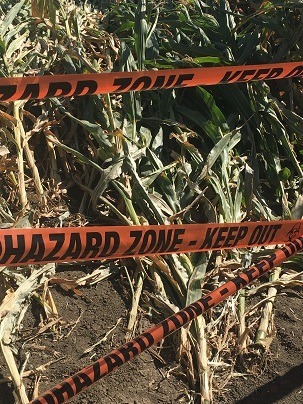
Rising Profile Ahead for Eminent Domain
When you think of eminent domain, what comes to mind? Perhaps you think of land that suffered some kind of toxic dumping or spilling, so that the government has to take it in order to restore it, if possible, to a non-hazardous state. And that does happen.
But sometimes, city governments move to take property under eminent domain for other reasons. Maybe the owner has racked up more back taxes than the home is worth. Or maybe the owner’s mortgage has gone underwater. But can the government legally take such property? When do governments really resort to eminent domain?
As some financial observers are predicting a recession in the midst of a housing shortage, now is a good time to review eminent domain. And in the coming decade we’ll be seeing more of a new eminent domain issue — one driven by climate change.
Read on as we explore these issues.
According to a Major Real Estate Industry Group, “Blighted” Property Can Be Seized.
As the National Association of REALTORS® describes it, eminent domain has these elements:
- It is government seizure of private property.
- The property is taken with proper compensation to the owner, but without the owner’s consent.
- Under the Fifth Amendment to the Constitution, property taken by eminent domain must be assigned to some kind of public use.
- In order to seize a property for economic development reasons, the government must show the property is blighted.
But what does blighted mean?
We turn to state laws for the answer. Each state provides specific definitions of “blighted” for the purpose of regulating property redevelopment. By way of illustration, we can look to Pennsylvania law and its blighted property removal provisions.
Generally, a “Blighted” Home Is Unoccupied, and in Debt or Hazardous.

Pennsylvania describes property as blighted when it:
- Poses a fire hazard or a public nuisance.
- Is in bad enough condition or has such dangerous components that it has become an “attractive nuisance to children.”
- Has been classified by local property code administrators as unfit for human habitation.
- Lacks connected and working utilities, plumbing, HVAC, or sewer services, leaving the property unfit for use.
- Has been left empty with the taxes neglected for at least two years.
- Has been left empty and not rehabilitated despite being the subject of a city’s notice to rehabilitate for over a year.
- Has accumulated tax debt amounting to more than 150% of the property’s market value.
- Has actually been declared abandoned by the owner or estate.
If the Pennsylvania property is both blighted and vacant, it can be certified to the Redevelopment Authority. Vacant is defined as unoccupied, or subject to an unpaid lien for the cost of demolition or a code violation for at least six months.
Governments Must Follow Notice Rules Before Taking a Home.

We can turn to Pennsylvania law to illustrate the process. If a Pennsylvania city wanted to take private property, it could, following the provisions of the Eminent Domain Code, which has been part of Pennsylvania law in some form dating back to 1964.
Under its provisions, the local city council would need to have, or initiate, an ordinance that creates a property review committee. And that committee has to consist of the government officials described by the Pennsylvania statute.
After it has reviewed and certified a property for taking, a local government in Pennsylvania can hold, tear down, or dispose of it. The land may then be repurposed for residential, commercial, or industrial use.
But before a property can be certified for redevelopment, the city must communicate its intentions to the property owner. The owner must receive notice and a chance to fix the problems or appeal the notice before the property is condemned.
Freddie Mac and Fannie Mae Have Fought Eminent Domain in Mortgage Debt Cases.
Cities have used eminent domain to buy out underwater mortgages — as opposed to the actual houses that secure the debts. The cities’ goal? To preemptively ward off foreclosures and save neighborhood property values. The idea is that if the city can seize underwater mortgages, it can partially pay the outstanding balances and then refinance the debts with new, government-backed loans. This way, cities would be seizing the loans to actually help homeowners keep their properties, rather than be foreclosed out of them.
In a high-profile case that unfolded in Richmond, California, the Federal Housing Finance Agency (FHFA) pressed cities to stop seizing mortgages. The FHFA is the agency that oversees conventional mortgage sponsors Freddie Mac and Fannie Mae. Fannie and Freddie have a vested interest in these loans, and the FHFA argued that the mortgage takings were unconstitutional.
Because the federal government is now barred by law from backing loans in seized mortgage cases, the use of eminent domain to stop foreclosures is no longer considered a viable strategy for cities.
But cities continue to look at eminent domain as a tool to promote affordability. In Washington State as well as California, cities have used eminent domain to seize property outright, so they can turn the lots into affordable housing.
Climate Change Is the New Frontier for Land Takings.
In places like Long Island, New York, rising sea levels, along with violent storms and coastal erosion, are claiming low-lying land. As part of climate change adaptation plans, coastal towns are working on beach restoration and engineering to redirect stormwater flooding. And they are also facing the reality that the “managed retreat” of residential areas away from beachfronts will be a necessity.
One of the various elements of the managed retreat planning could be eminent domain. Through this method, the towns would warn property owners that their city governments will claim the land in, for example, the year 2035. Proper compensation would be fair market value, so there’s an incentive to sell beachfront homes and move to higher land.
Will some people decline to move until they are forced to do so? Likely so. If the government determines the areas are not safe to inhabit, it can use the takings provision to divest people of their properties without their consent.
Looking Ahead, Property Takings Could Become More Common.
Generally speaking, we could say eminent domain hasn’t been a big issue in real estate law. But its profile could rise dramatically over the coming decades.
Governments are scrambling for workarounds in a time when affordable housing is scarce. They are also coping with loss of habitable land due to extreme weather, and its resultant wildfires and flooding. These factors suggest that the government will be more inclined to use all available legal tools in the years ahead.
Supporting References
Pennsylvania Blighted Property Removal Statute, 35 Pa. Stat. § 1712.1.
National Association of REALTORS®: Eminent Domain.
REALTOR® Magazine: FHFA to Cities – Don’t Abuse Eminent Domain (Aug. 12, 2013; internal citations omitted).
The Poverty & Race Research Action Council (PRRAC): Using Eminent Domain to Acquire Private Rental Housing – Recent Examples (Public or Community Control of Rental Housing Policy Brief No. 2; Oct. 23, 2020).
Clare Secrist for National Public Radio / WSHU: East Hampton’s Shoreline is in Danger Due to Sea Level Rise (May 2, 2022).
Photo credits: Nick Youngson (CC BY-SA 3.0) via Pix4free; cottonbro and Den, via Pexels.
